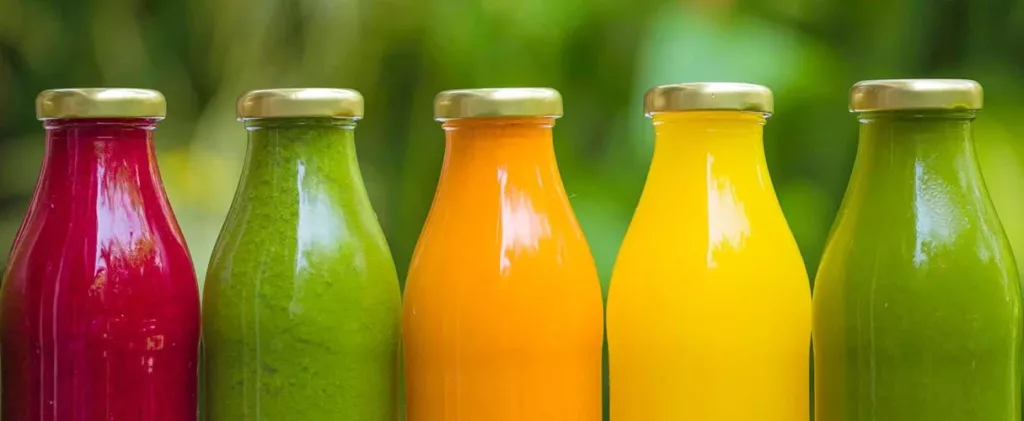A juice cure is a pleasant form of purification and detoxification of the body through juice. In our guide for a 7-day fruit and vegetables juice diet, you will learn about delicious juice combinations – with amazing effects on health, weight, and performance.
So that your fruit and vegetables juice diet is really perfect, we have summarized the most important tips for you:
Organic fruit and vegetables
Use organically grown fruit and vegetables. In this way, you can enjoy the greatest possible amount of vital substances and at the same time prevent exposure to chemicals from toxic pesticides. You can easily extract the juice from most of the organic fruit and vegetables without peeling them. For example, carrots, kohlrabi, or radishes. In this way, you will stock up on those rare bioactive substances in the peel and the green.
Make sure you use the right juicer
You can find more information in the “Twin gear juicers Vs Centrifugal juicers” article in our blog.
Test new juices, during the fruit and vegetables juice diet!
Experiment with new combinations of fruit and vegetables to find out which juice you like more. However, pay attention not only to the taste but also to the benefits of the juice. So make a juice out of all those fruits, vegetables, and special ingredients that can best help you in your current situation. If necessary, talk to nutrition consultants to determine which fruit and vegetables are good for what problem.
Combine sweet with tart and bitter
Some vegetables and herbs taste very tart and bitter in the form of juice (e.g., green leafy vegetables, cabbage, grass, wild plants, parsley, oregano, etc.). Our sense of taste – which, thanks to the food industry! Only loves sweet and hearty – is reluctant to take this type of juice. Therefore, always mix a sweet component with bitter juices, such as apple or carrots. You will find that your body will get used to the new taste, and after a while, you will experience much less pleasure in sweet or spicy foods. Juices help your body to once more love what is good and healthy for it.
Drink kale
Kale is an incredibly healthy vegetable, but it is also incredibly tart. Kale, compared to other vegetables, has a relatively high protein content. Also, kale provides twice as much vitamin C as lemons and almost twice as much calcium as cow’s milk. When it comes to folic acid and vitamin K, kale is even the front runner among all common vegetables.
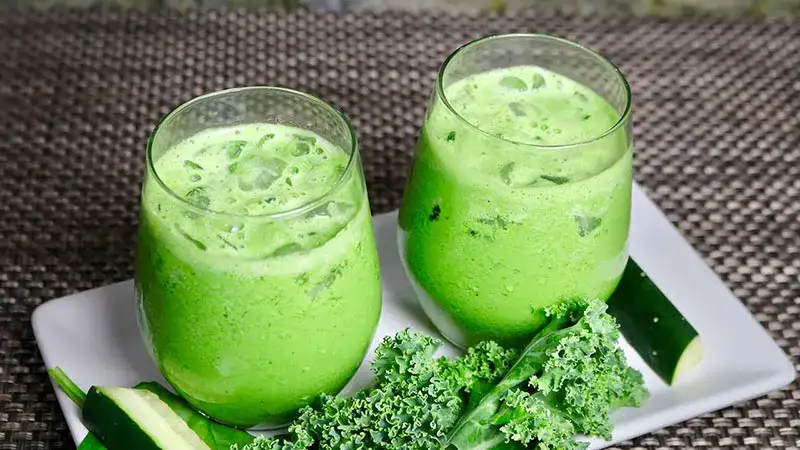
Simultaneously, the green part of kale only contains a fraction (2 percent) of the amount of oxalic acid found in spinach. Under certain circumstances, oxalic acid can bind minerals to itself so that the body can no longer use them. While the low oxalic acid content is a benefit of kale, it doesn’t mean that spinach is bad. Spinach contains so many excellent substances that oxalic acid alone cannot reduce the quality all that much.
People aren’t used to eating kale, so they don’t eat it regularly or insufficient amounts. However, if you squeeze the kale into juice and mix it with carrot juice and apple juice, then you get kale’s fabulous nutrients without having to tolerate its bitter taste. There’s no kale in the market right now? Then choose white or red cabbage! Or even savoy cabbage!
Valuable juice ingredients
By the way, juices do not only consist of pressed fruit and vegetables. Juice recipes can be enriched with a multitude of other precious ingredients, which can greatly enhance the effects of the juices:
- Lemon peel: For example, put the pulp of a lemon and a piece of the untreated lemon peel in the juicer. Not only does the peel add a tangy fresh note to your juice, but it also contains essential oils, flavonoids, and pectin, which provide you with powerful health benefits. The lemon peel’s effect is described as antibacterial, digestive, and vascular protecting so that the lemon peel has a particularly positive effect on your immune system and your digestive system and is indicated for venous diseases.
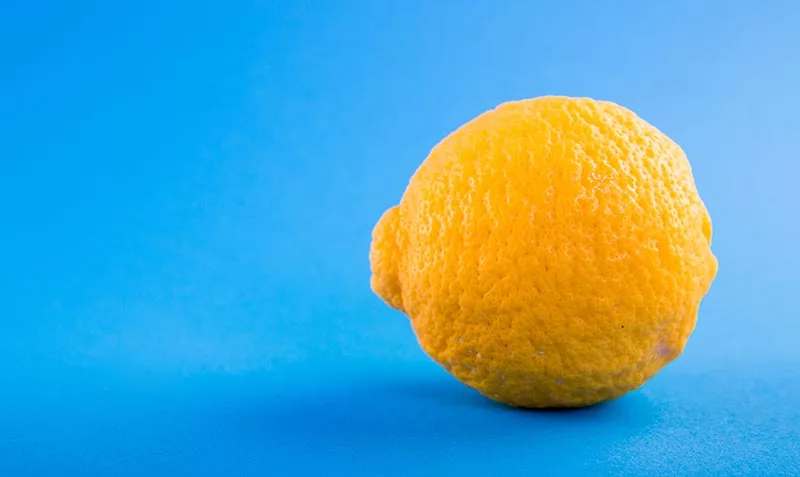
- Fresh cilantro: If you like fresh cilantro, use a few stalks in your juice now and then. But not too much, because just a little coriander is enough. Coriander is considered an excellent chelating agent for mercury in alternative medicine. It is supposed to help drain the mercury in particular out of the brain.
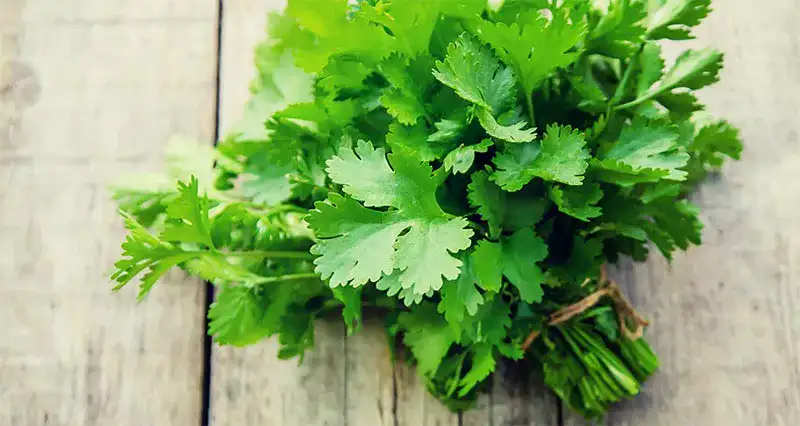
- Fresh parsley: Parsley is a powerful herb, and its juice is one of the strongest juices around. So don’t mix too much of it into your juice. 50 grams of parsley per liter of juice is completely sufficient and already highly effective. Parsley is extremely rich in calcium and iron. In naturopathy, parsley juice is used to regenerate blood vessels, promote blood formation, and dissolve kidney grits. During pregnancy, parsley should not be drunk as a juice because the parsley has a strong stimulating effect on the uterus and stimulates the blood flow, which – if overdosed – could lead to premature labor. In the case of non-pregnant people – especially men – this stimulating and blood circulation-promoting effect on the genital organs is viral because it noticeably increases men’s potency (it is said).
- Fresh ginger: A piece of ginger (according to personal preference, about 1 cm long) should be put into your juicer every day along with the fruit and vegetables. Ginger is a very beneficial vegetable. It contains essential oils, special fatty acids, and other secondary plant substances, all of which have wonderful effects on the organism. These include the analgesic effect, the anti-rheumatic and anti-inflammatory effect, the antihypertensive and cholesterol-reducing effect, the digestive and bile flow stimulating effect as well as a quick effect on nausea and vomiting (the latter especially when nausea and vomiting occur as a result of pregnancy or the so-called travel sickness).
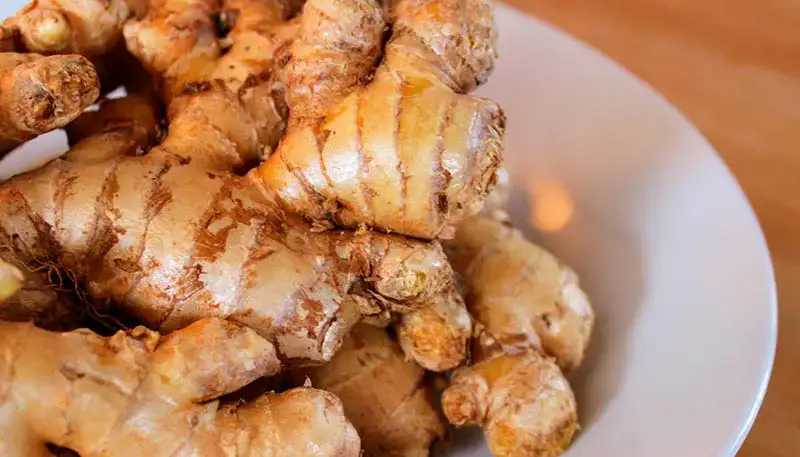
- Wild herbs: Wild herbs are full of chlorophyll, bitter substances, basic minerals, and secondary plant substances. Many of these substances are only found in minimal quantities in our cultural salads. You can compensate this deficit with wild herbs – completely free of charge! You should, therefore, always add some wild herbs to the juicer, such as fresh dandelion, fresh plantain, fresh chicory, fresh meadow rennet, fresh nettle leaves, fresh goose thistle, fresh ground elder, etc.
- Grasses: If you are going to pick wild herbs, take some grasses. A high-quality juicer squeezes the grass separately and presses the alkaline out of the grass, which has an amazing effect on the stomach and intestines, cleans your blood, and makes your skin look like fresh peach skin. Powders made from wheatgrass or barley grass could be used as alternatives on days when you don’t have time to pick grass. Stir or mix a teaspoon of grass powder per glass into your ready-pressed juice.
- Chia seeds: Chia seeds are the tiny seeds of a South American plant. Chia seeds are particularly rich in omega-3 fatty acids. They swell fast like flaxseeds and therefore produce mucilage, a real boon for the digestive system. You can grind a few chia seeds in a blender or food processor and then mix them into your freshly squeezed juice. In this way, you consume valuable oils, which improve the absorption of fat-soluble vitamins and, at the same time, supply you with essential omega-3 fatty acids. As mentioned, chia seeds swell up considerably. If you let your juice stand for a few minutes, the result is a chia pudding that you can then eat with a spoon as a fruity meal.
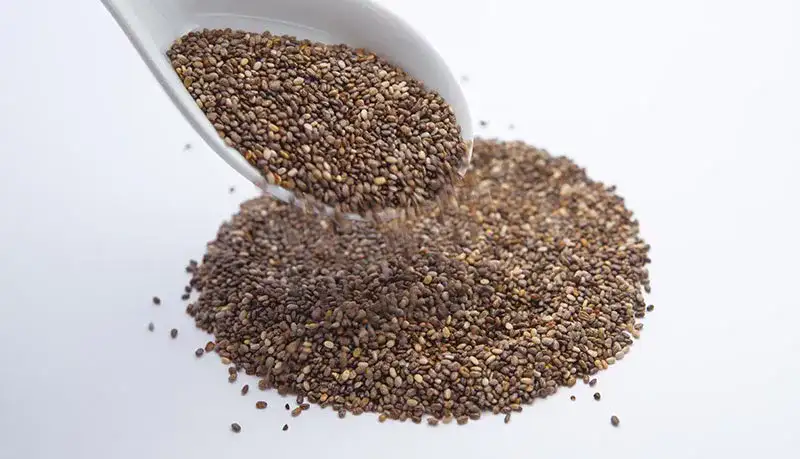
- Celery: Celery (also known as white celery) is an exceptional ingredient in healthy food. Celery has a salty taste because it is rich in natural sodium and potassium. If you mix the celery in the salad or mix a little of it in the salad dressing, salt can be reduced easily due to its natural richness in salt. Also, celery has a beneficial effect on the body’s mineral and temperature balance because of its rich salt content. Drinking it during hot days ensures that we don’t sweat as much as everyone else. Celery is also very rich in calcium as a vegetable and can also help meet the body’s calcium requirement in an extremely healthy way.
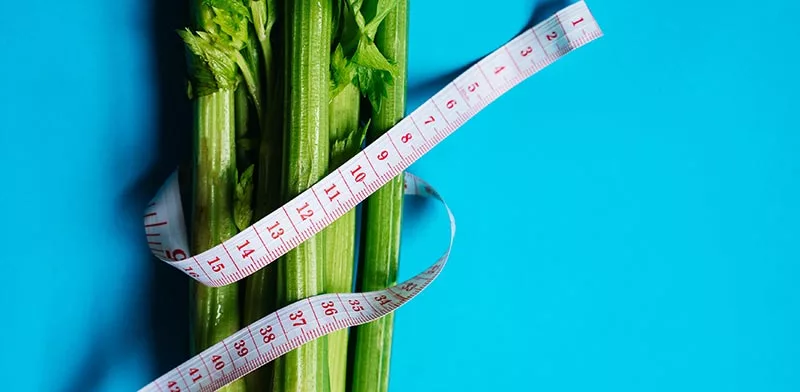
- Vegetable protein: Perhaps you are one of those people who would like to experience the beneficial effects of juices and at the same time want to optimize their protein supply in a healthy and uncomplicated way. For this purpose, you can mix a portion of a pure vegetable protein powder into your delicious juices, such as rice protein, hemp protein, or the basic lupine protein. This naturally slows down the digestion time of the juice. Also, it would be best if you didn’t mix a protein into every juice. Do this once a day and drink all the other juices that day without mixing anything.
With all this information at hand, you can immediately enter the exciting and extremely delicious world of freshly squeezed juices. You can put together your own juice program and enjoy a body full of pure vitality every day from now.
The 7-day fruit and vegetables juice diet
The VFB fruit and vegetables juice diet is designed for 7 days. The juice recipes are compiled according to the following three criteria:
We were hoping you could get to know the most diverse juices, and thus very different recipes are possible with the VFB juice treatment.
The recipes experience a certain increase in taste and nutrition. This means that on the first day, there are juices that are easy-to-prepare, juices that everyone likes, and that many people already know (but often bought and not freshly squeezed). Towards the end of the fruit and vegetables juice diet, there are more unusual juices and juices with a more intense taste and a strong effect. Even thou, juices have a holistic effect on the body, i.e., always affecting the entire organism. Nevertheless, every juice also has a certain “specialty,” i.e., a particularly beneficial effect on a certain organ. Therefore, the recipes are put together so that each day is dedicated to a specific organ or a specific goal.
VFB fruit and vegetables juice diet is not just a juice treatment
The VFB juice diet is not a pure fruit and vegetables juice diet, which means that you can also consume solid food at the same time. It would of course be ideal if you also practice a high-alkaline diet during the 7 days of the VFB fruit and vegetables juice diet. But even if you stick to your previous diet, you will see positive changes in yourself.
Two juices a day
On each day of the 7 days VFB fruit and vegetables diet there are two different juices that should be drunk. We recommend drinking the first juice instead of breakfast and having the second juice as a starter for lunch, preferably half an hour to an hour before lunch. If you want, you can make double the portion of the first juice so that you can drink another juice in the late morning, i.e. do not eat any solid food at all until lunch. This way, your body can absorb the high-quality nutrients and vital substances from the juices completely undisturbed and devote itself entirely to the morning’s detoxification work.
Many juices contain carrots and apples. In part because both are extremely healthy, and in part, because they are both delicious. If you are less into sweetness or if you already have a lot of juice experience, you can always replace the apples with larger quantities of vegetables.
Seasonal fruit and vegetables for your juice diet
Since juice treatments are preferably carried out in early spring, our juice treatment only consists of fruit and vegetables that are available at this time of the year. If you would like to take the cure at a different time of year, you are welcome to use the fruit and vegetables available in that season.
The little plus – a drop of oil
Since many of the juices contain fat-soluble vitamins, you can add a little oil to the juice for better absorption. A few drops up to half a teaspoon are sufficient. Of course, choose a good quality oil, such as hemp oil, linseed oil, wheat germ oil, or similar ones. If you add chia seeds to your juice – as mentioned above – you can do without the oil.
How much juice?
At least 250 to 400 milliliters of each juice should be made. You can freely choose the ratio between the individual ingredients. There are also no formulations that must be strictly adhered to. These quantities are only a guideline; you can adjust them to your taste and experimentations. Of course, the nutritional value of the juice depends heavily on the freshness and juice content of the fruit and vegetables used, as well as the quality of your juicer. You can mix ginger, lemon peel, wild herbs, or even spices such as vanilla into any juice as you like.
Pure or diluted?
The juice can be consumed directly or diluted with water. If you drink the juice pure, you should drink the same amount of water a little later. Make absolutely sure that you drink the juices very slowly, i.e. only sip by sip, and a lot of salivating.
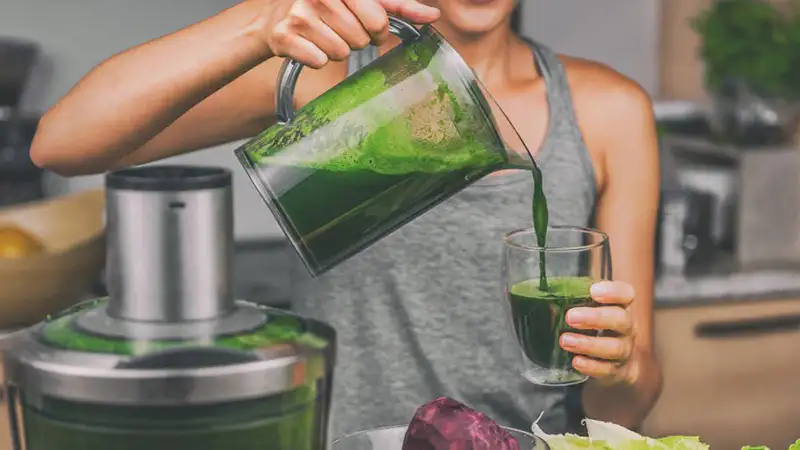
The juice week with the VFB fruit and vegetables juice diet
The amounts given in the juice treatment are intended for 1 person.
1st day to increase the antioxidant status:
- Orange juice: from 4 – 5 oranges
- Orange-apple-ginger juice: made from 3 oranges, 3 apples and a piece of ginger
2nd day for the eyes:
- Carrot-orange-lemon juice: made from 400 grams of carrots, 2 oranges, ½ lemon, some lemon peel
- Carrot and apple juice: made from 400 grams of carrots and 2 apples
3rd day for the blood:
- Carrot-apple-spinach-celery juice: from 400 grams of carrots, 2 apples, 150 grams of Spinach and 50 grams of celeriac or one Stick of celery
- Carrot, spinach and alfalfa sprout juice: made from 400 grams of carrots, 100 grams of sprouts and 100 grams of spinach
4th day for blood pressure:
- Carrot-beetroot-apple juice: made from 300 grams of carrots, 200 grams of beetroot and 2 apples
- Carrot-spinach-pear juice: made from 350 grams of carrots, 150 grams of spinach and 2 very firm pears
5th day for anti-inflammatory:
- Carrot-orange-pineapple-ginger juice: made from 300 grams of carrots, 3 oranges, 250 grams of Pineapple and a piece of ginger
- Carrot-fennel-pineapple juice: made from 300 grams of carrots, 150 grams of fennel and 250 grams of pineapple
6th day for stomach and kidneys:
- Carrot-apple-cabbage juice: made from 400 grams of carrots, 2 apples and 150 grams Cabbage
- Carrot-apple-parsley juice: made from 400 grams of carrots, 2 apples and 50 grams Parsley
7th day for the stomach, liver and intestines:
- Carrot-celery-spinach-dandelion juice: from 400 grams of carrots, 50 grams of celery, 150 grams of spinach and 50 grams of dandelion
- Carrot-parsnip-potatoes Parsley juice: made from 400 grams of carrots, 150 grams of parsnips, 100 grams of potatoes (raw), 50 grams of parsley
We wish you a good appetite for your freshly squeezed juices, having fun squeezing it, and success in detoxification, purification, and – if desired – weight loss!
